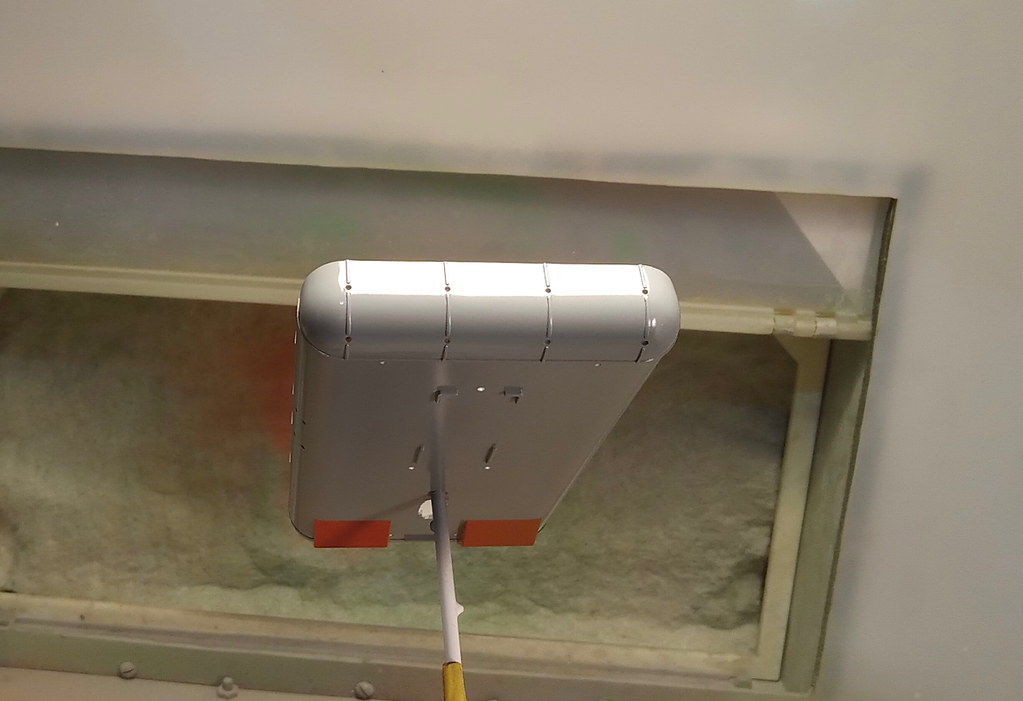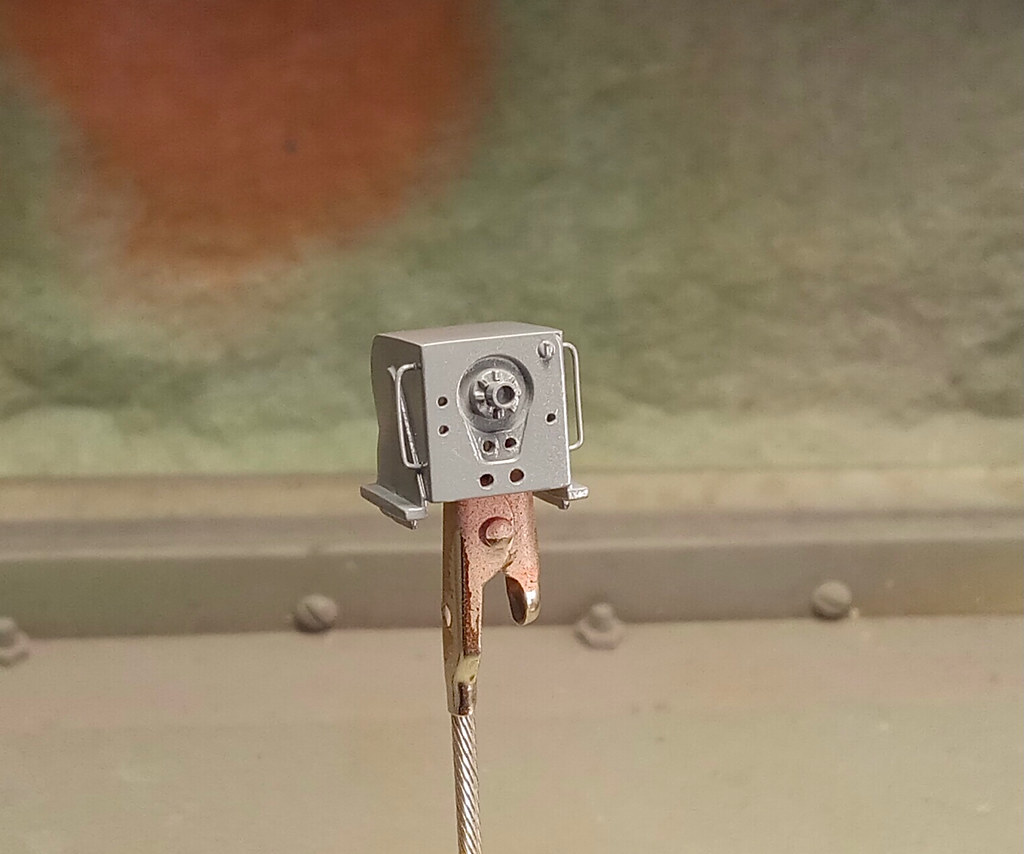Well, finally, paint is flying... and it is good. It was a journey.
1. Rather than use primer, I decided to use MRP White lacquer as a sort of primer/base coat. I suspected what happened might happen, but I didn't realize to what degree that it would. And that is... it does little to fill minor scratches. The short of it is I thought I did a good enough job prepping the plastic. The problem wasn't terrible, just not to my liking. And actually, this is another property of this paint that makes it appealing. This paint goes on very thin, thus preserving the detail below. So, I learned, that if I am going to go that route, I need to polish the plastic better. I suppose it will depend on what I am going after, and what the condition of the plastic is.
2. Problem 1 lead to problem 2. I tried applying heavier coats to fill minor scratches. What I learned, is that is a mistake. Mainly, because I was in the old mindset that hey, I will flood the piece and at the same time, draw out the gloss. That works well for acrylics and enamels, but forget it with lacquer. This paint is so darn forgiving I thought, I might just get away with it. Mostly, I did get away with it, but certain areas where paint pooled... not so. The end result was that the paint crazed. It took me awhile to get it through my thick skull just what was happening. I at first thought I did a crummy job sanding the plastic. I then followed with sanding the affected areas and reapplied. And wouldn't you know it, the problem reappeared when I sprayed it again. I went through two of these cycles when I realized, ok, the paint is crazing.
3. On the third attempt I decided, ok, let's see what this paint does applying lighter coats. Again, being used to acrylics and how they can produce rough finishes, I was skeptical. And boy, was I wrong! This paint is awesome! It went on super smooth and it even has the ability to draw out gloss all on its own. Certainly, not car finish gloss, but the paint went down smooth producing a sheen.
4. The next step was to try their Super Clear Gloss. I wanted a layer of protection for the color coat, but also, I wanted a deeper shine. I tested it on some spoons and it seemed ok. With a leap of faith... I went for it. And holy cats...again... the paint exceeds my expectations. In the images below you will see just how nice a gloss I achieved. And I tell ya, I didn't even need to work at it. The gloss I got is in my opinion, good enough for a car body, and all without losing massive detail. I am gonna try this on a car model one of these days.
I don't want this post to be all about paint, but it is part of the journey. So, for the last time, here is what I think of this paint:
It comes perfectly thinned for airbrushing. I never need to thin it.
It sprays like silk. What a joy to watch it spray.
It goes onto the model wet, minimizing sandpaper finishes.
Tipdry is a thing of the past.
Not once did I get some sort of glob making it to the model. Acrylics, almost all the time.
The finish is literally perfect. If dust makes it to the model, you can lightly sand it and touch it up. No issues blending. In some cases, I was able to scratch the dust off with my fingernail, and no need to repaint.
It dries to the touch super fast.
I had to mask for the orange and absolutely no evidence of paint pulling up. And, I get clean lines along the paint edge.
In my opinion, it covers well.
The paint keeps a low profile maintaining the models detail.
Cons?
Must do a good job prepping the plastic. If you are not using a primer, the plastic should appear polished. My next step is to paint the tub and I will use a dedicated primer, followed by a light sanding. Looking to see how that goes. And btw. Applying the clear fixed most flaws in the paint/plastic issue.
Fumes, I guess, but I don't find this overly offensive. Though, I have a pretty good evacuation system.
Price, probably. But, I don't mind paying more for a paint that works so darn well... straight from the bottle. The cost of a messed up model far outweighs the cost of this paint. Modeling should be fun. Fighting paint is not fun.
Ok, off my soapbox.
Here is how they came out. Some of the pieces I didn't shoot for that super gloss. I did so mainly on the pan.


Below. To an astute eye, one might say, hey Bakster. I see a spec in the finish just right of the clip. To which I would say, yeah, you are right. It settled after paint. I blew it off after taking the image.


Below. I dont recall but I think this piece had a rougher finish as molded. Maybe to simulate cast iron. Not sure, but I did not spend much time cleaning it up. For the most part, it won't be seen once the tracks are installed.



Now, the hard part. Protecting the work from all the wiring and optic work I will be doing.
Next step is to prime the tub. There are hard to reach scratches and a lot of filling was done. Need to see what I missed.